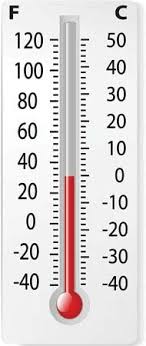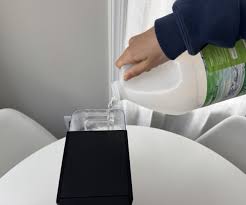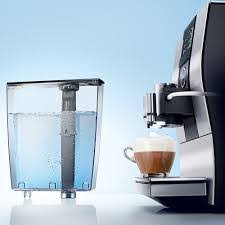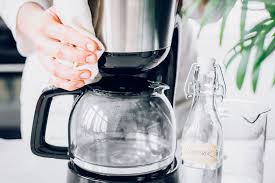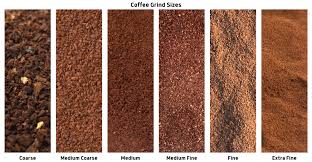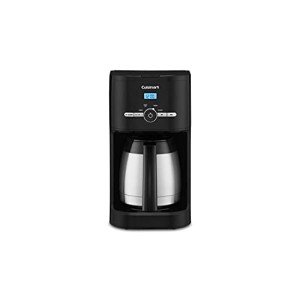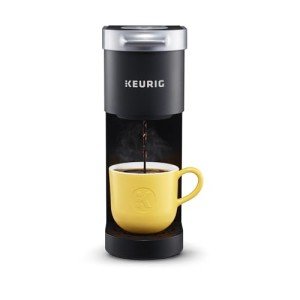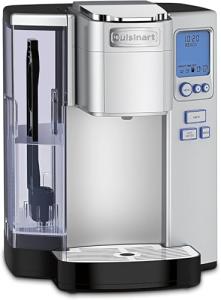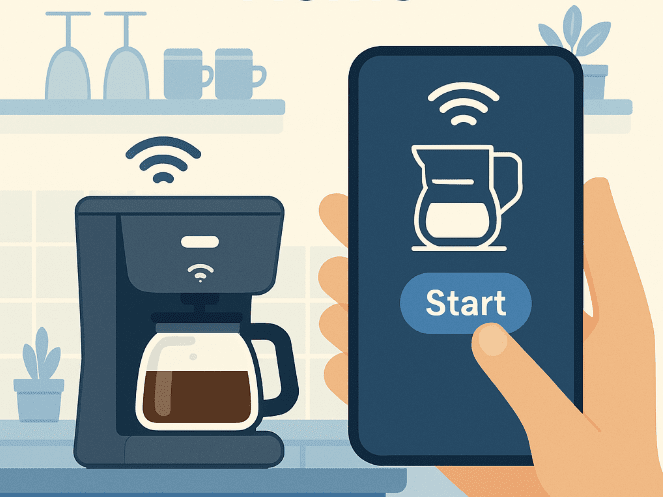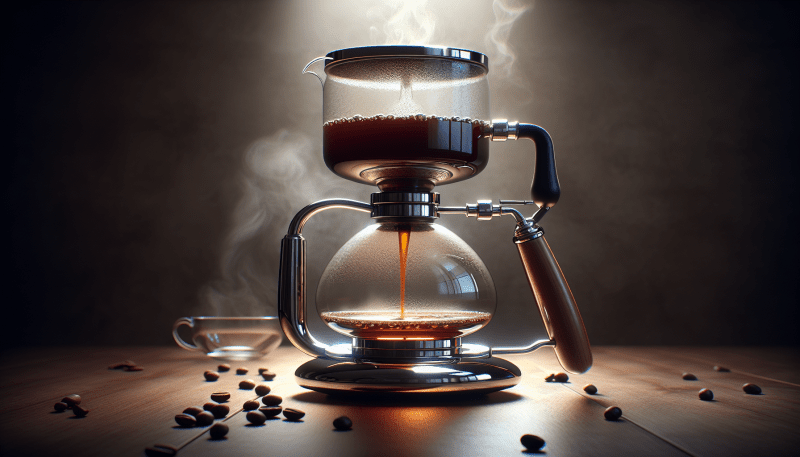5 Ways to Speed Up Your Coffee Maker: Brew Faster & Enjoy More!
In the fast-paced world we live in, every second counts, especially when it comes to that much-anticipated first cup of coffee in the morning. A slow coffee maker can turn a pleasant ritual into a frustrating wait. If you find yourself tapping your foot impatiently, wondering why your coffee machine seems to be taking an eternity, you’re in the right place.
This comprehensive guide will delve into five practical ways to speed up your coffee maker, ensuring you get your caffeine fix quicker and more efficiently. We’ll cover everything from essential maintenance to smart brewing techniques, helping you optimize your morning routine.
Transform your slow brew into a speedy pour and reclaim those precious minutes!
Why is My Coffee Maker So Slow? Understanding the Core Issues

Before we discuss solutions, it’s helpful to understand why your coffee maker might be lagging. Several factors can contribute to a sluggish brewing process. Identifying the root cause is the first step toward a faster, more efficient coffee experience.
Mineral Buildup: The Silent Saboteur
One of the most common culprits behind a slow coffee maker is mineral buildup. Over time, hard water leaves behind mineral deposits, primarily calcium and magnesium, inside your machine’s heating elements and water lines.
This scale buildup can restrict water flow and reduce heating efficiency, leading to significantly longer brewing times. Imagine a tiny, calcified dam forming within your machine – that’s what mineral buildup does. Regular descaling is crucial to prevent this.
Clogged Components: A Hidden Impediment
Beyond mineral deposits, coffee grounds, oils, and other debris can accumulate in various parts of your coffee maker. This includes the showerhead, filter basket, and even the brewing chamber. These clogs impede the smooth flow of water and coffee, extending the brewing cycle. A well-maintained machine with clean components will continuously operate more efficiently.
Aging or Faulty Heating Elements
The heating element is the heart of your coffee maker. Its job is to heat the water to the optimal brewing temperature quickly. As coffee makers age or are subjected to excessive mineral buildup, the heating element can become less efficient or even faulty. A compromised heating element will take longer to heat water, directly impacting brewing speed. This might sometimes require professional repair or even a replacement machine.
Incorrect Water Temperature
While not directly about speed, a machine struggling to reach or maintain the correct brewing temperature (typically between 195°F and 205°F) can indirectly make the process feel longer, as the coffee extracts more slowly. Consistent and optimal water temperature is key for both speed and flavor.
Coffee Grind Size and Freshness
The grind size of your coffee can impact how quickly water flows through the grounds. If your grind is too fine for your machine, it can create a denser bed that water struggles to penetrate, slowing down the drip. While this doesn't directly affect the machine's speed, it does affect the overall brewing duration. Fresh coffee also plays a role, as stale beans can lead to less efficient extraction.
1. Regular Descaling: The Ultimate Speed Boost
If your coffee maker is running slow, mineral buildup is likely the primary culprit[cite: 5]. Regular descaling is the single most effective way to combat this and significantly speed up your brewing process. Think of it as a deep clean for your machine's internal workings, ensuring water flows freely and heats efficiently.
Why Descaling is Crucial
Hard water, prevalent in many areas, contains minerals like calcium and magnesium. When this water is heated, these minerals can deposit inside your coffee maker’s pipes, heating elements, and brewing chambers. This buildup, known as scale, acts like an insulator, forcing your machine to work harder and longer to heat water to the desired temperature. It also physically narrows the pathways for water, slowing down the flow[cite: 5]. The result? A sluggish brew, reduced performance, and potentially shorter machine lifespan.
How Often Should You Descale?
The frequency of descaling depends on your water hardness and how often you use your coffee maker. As a general rule:
- **Weekly Users:** If you use your coffee maker daily with moderately complex water, descaling every 1-3 months is a good starting point.
- **Heavy Users/Hard Water Areas:** Consider descaling monthly for frequent use or tough water.
- **Infrequent Users/Soft Water Areas:** You might be able to stretch it to every 3-6 months.
Many modern coffee machines have an indicator light that signals when descaling is needed, so always check your machine’s manual.
The Descaling Process: White Vinegar vs. Commercial Descalers
There are two primary methods for descaling your coffee maker:
a. White Vinegar Method
Due to its acetic acid content, white vinegar is a natural and effective descaling agent. It’s readily available and affordable.
- **Preparation:** Empty your coffee maker of any old grounds and rinse the carafe.
- **Solution:** Fill the water reservoir with equal parts white vinegar and water.
- **Brew Cycle 1:** Run a full brewing cycle with the vinegar solution. You’ll notice a strong vinegar smell – this is normal.
- **Soak (Optional but Recommended):** After the first cycle, let the solution sit in the machine for 30 minutes to an hour to work on stubborn deposits.
- **Rinse Cycles:** Empty the carafe and run at least two to three complete brewing cycles with clean, fresh water to thoroughly rinse out all vinegar residue. This step is crucial to prevent your coffee from tasting like vinegar!
b. Commercial Descalers
Many coffee machine manufacturers produce their descaling solutions, or you can find universal descalers. These are often formulated for maximum effectiveness and can be gentler on certain machine components.
- **Read Instructions:** Always follow the specific instructions on the commercial descaler packaging, as concentration and usage vary.
- **Preparation:** As with vinegar, empty and rinse your machine.
- **Solution:** Dilute the descaler according to the product instructions and pour it into the reservoir.
- **Brew/Rinse Cycles:** Run the required number of brew and rinse cycles as specified by the descaler’s instructions.
By regularly descaling, you ensure faster brewing times, extend the life of your coffee maker, and maintain the quality of your coffee.
2. Pre-Heat Your Machine and Components
Just as you preheat an oven for baking, preheating your coffee maker can shave precious minutes off your brewing time and even improve the taste of your coffee. A cold machine has to work harder to heat the water to the optimal brewing temperature, delaying the entire process. Starting with a warmer system gives your machine a head start.
The Science Behind Pre-Heating
When cold water enters a cold brewing system, a significant portion of the machine's initial energy is used to warm up the internal components – the boiler, pipes, and brew head – before it can even begin to heat the water to brewing temperature. This phenomenon is particularly noticeable in espresso machines, where temperature stability is paramount for extraction. Even in drip coffee makers, a warmer internal environment allows the heating element to focus solely on bringing the water to temperature, rather than also warming up the surrounding parts.
How to Pre-Heat Effectively
a. Run a Hot Water Cycle
This is the simplest and most common method for preheating:
- **Empty Reservoir:** Ensure your water reservoir is filled with fresh water.
- **No Grounds:** Do not add coffee grounds to the filter basket.
- **Run Cycle:** Place an empty carafe under the dispenser and run a full brewing cycle with just water.
This hot water will circulate through the system, warming up all the internal components. Once the cycle is complete, discard the hot water in the carafe. Your machine is primed and ready for a faster, more efficient brew.
b. Warm Your Carafe and Mug
While this won't directly speed up the brewing process of the machine itself, it will prevent your freshly brewed coffee from losing heat too quickly upon contact with cold surfaces. A cold carafe or mug can drastically drop the temperature of your coffee, making it less enjoyable and potentially requiring reheating.
- **Carafe:** Swirl some of the hot water from your pre-heating cycle in your carafe before discarding, or rinse it with hot tap water.
- **Mug:** Fill your mug with hot water from the tap or kettle while your coffee is brewing. Discard just before pouring.
Benefits Beyond Speed
Pre-heating offers more than just a quicker brew. It also contributes to better-tasting coffee. The initial extraction can be suboptimal when hot water hits cold grounds, leading to a less balanced flavor. Ensuring your machine is at an optimal temperature from the start facilitates a more consistent and efficient extraction, yielding a more flavorful and aromatic cup of coffee.
3. Use Filtered Water: For Longevity and Speed
The water quality you use in your coffee maker directly impacts its performance and longevity. Using filtered water is not just about taste; it’s a proactive step that can significantly contribute to a faster brewing process by preventing the primary cause of sluggish machines: mineral buildup.
The Impact of Hard Water
Tap water, especially in regions with "hard" water, contains dissolved minerals like calcium and magnesium. While these minerals are generally harmless for consumption, they harm coffee machines. As water is heated and converted into steam during brewing, these minerals precipitate out and form hard deposits, or scale, inside your machine’s internal components[cite: 5]. These deposits accumulate over time, restricting water flow, reducing the efficiency of the heating element, and ultimately slowing down your brewing[cite: 5].
How Filtered Water Helps
Filtered water, such as water from a Brita filter, a refrigerator dispenser, or a dedicated water filter system, removes many of these dissolved minerals before they enter your coffee maker. By reducing the mineral content, you drastically slow down the rate of scale buildup. This translates to:
- **Faster Brewing:** Less mineral buildup means clearer pathways for water and more efficient heating elements, resulting in consistently faster brew times.
- **Extended Machine Lifespan:** Preventing scale buildup protects the delicate internal parts of your coffee maker from corrosion and damage, extending its operational life.
- **Improved Coffee Taste:** Minerals in tap water can also impart off-flavors to your coffee. Filtered water allows the accurate flavor profile of your coffee beans to shine through, enhancing your brewing experience.
Types of Filtered Water for Coffee Makers
- **Pitcher Filters (e.g., Brita, Pur):** These are convenient and affordable options for filtering small batches of water.
- **Faucet Filters:** Attach directly to your faucet, providing filtered water on demand.
- **Refrigerator Filters:** Many modern refrigerators have built-in water filters that dispense filtered water and ice.
- **Under-Sink or Whole-House Filtration Systems:** More comprehensive solutions that filter all water into your kitchen or home.
- **Bottled Filtered Water:** While less environmentally friendly and more expensive, this is an option if other filtration methods aren't feasible.
While using filtered water won't eliminate the need for occasional descaling, it will significantly reduce the frequency required, making your coffee maker run faster and more efficiently for longer periods.
4. Clean Your Coffee Maker Regularly: Beyond Descaling
While descaling tackles mineral buildup, general cleaning addresses other culprits that can slow down your coffee maker: oils, grounds, and residue. These can accumulate in various parts of the machine, impeding water flow and affecting performance. Regular cleaning, beyond just descaling, ensures all components are free from obstructions and operating at their best.
The Hidden Dangers of Coffee Residue
Every time you brew, coffee oils and fine grounds are left behind. Over time, these residues can become rancid, affecting the taste of your coffee and creating sticky blockages. These blockages can restrict water flow through the showerhead, filter basket, and brewing chamber, making your machine work harder and slower. Furthermore, a dirty machine can become a breeding ground for mold and bacteria, which you do not want in your morning cup.
Daily and Weekly Cleaning Habits
a. Daily Rinse and Wipe
This simple habit can make a big difference:
- **After Each Use:** Rinse the carafe and filter basket with warm, soapy water immediately after brewing. This prevents coffee oils from hardening and becoming difficult to remove.
- **Wipe Down:** Use a damp cloth to wipe down the exterior of the machine and the warming plate. This prevents spills from burning onto the plate.
b. Weekly Deep Clean
Once a week, dedicate a bit more time to a thorough cleaning:
- **Disassemble Removable Parts:** Remove the filter basket, carafe, and other removable parts (e.g., drip tray, water reservoir lid).
- **Soak and Scrub:** Soak these parts in warm, soapy water for 15-20 minutes. Use a soft brush or sponge to scrub away any accumulated coffee grounds or oils gently. Pay special attention to the nooks and crannies of the filter basket and showerhead.
- **Clean the Showerhead:** If your showerhead is removable, remove it and clean any small holes with a toothpick or a small brush to ensure even water distribution. If it's not removable, use a damp cloth to wipe it clean and clear any visible blockages.
- **Wipe Reservoir:** Wipe out the inside of the water reservoir with a damp cloth to remove any sliminess or residue. Do not use soap inside the reservoir unless specified by the manufacturer, as it can be difficult to rinse thoroughly.
- **Run a Water Cycle:** After reassembling, complete a cycle with plain water to rinse any residual soap or debris from the internal components.
Specialized Coffee Machine Cleaners
Consider using specialized coffee machine cleaning tablets or solutions for tougher oil buildup, especially in espresso machines or machines with more complex brewing mechanisms. These are formulated to break down coffee oils effectively. Always follow the manufacturer’s instructions for these products.
By integrating these regular cleaning habits into your routine, you’ll ensure your coffee maker operates smoothly. This will prevent slowdowns caused by everyday coffee residue and contribute to consistently great-tasting coffee.
5. Optimize Your Coffee Grind Size
While the grind size doesn't directly affect the mechanical speed of your coffee maker, it significantly influences the rate at which water flows through the coffee bed during brewing. An incorrect grind size can lead to either an over-extracted, bitter cup or an under-extracted, weak one, and critically, it can make your machine appear to brew slower or faster than intended for optimal results.
The Relationship Between Grind and Flow
Think of coffee grounds as tiny obstacles for water.
- **Too Fine:** If your coffee is ground too finely for your machine, it creates a very dense, compact bed. Water struggles to penetrate this bed, leading to resistance and a much slower drip rate. This can cause the machine to "choke" or the water to pool, extending the brewing time and resulting in over-extraction.
- **Too Coarse:** if the grind is too coarse, water will flow through the coffee bed too quickly, without sufficient contact time for proper extraction. While the brewing might seem faster, the resulting coffee will be weak, watery, and under-extracted.
Recommended Grind Sizes for Common Coffee Makers
The ideal grind size is determined by your brewing method and coffee maker type:
- **Drip Coffee Makers:** Most standard drip coffee makers (like traditional Mr. Coffee or basic Cuisinart models) work best with a **medium grind**. This consistency resembles granulated sugar. It allows for optimal water flow and sufficient contact time for extraction.
- **Pour-Over and Manual Brewers:** These often require a **medium-fine to medium grind**, depending on the specific device and desired flow rate.
- **French Press:** Requires a **coarse grind**, similar to breadcrumbs. This prevents fine particles from seeping through the mesh filter and creating a silty cup.
- **Espresso Machines:** Need a very **fine grind**, like powdered sugar, to create the necessary pressure for espresso extraction.
- **Single-Serve Pod Machines:** These typically come with pre-ground coffee, where the grind is optimized for their specific system. If you refill reusable pods, a **medium-fine** grind is usually suitable.
How to Adjust Your Grind
If you grind your own beans at home, experiment with your grinder settings. Make small adjustments and observe the brewing time and the taste of your coffee. If your current brew is slow and bitter, try a slightly coarser grind. If it’s fast and weak, try a slightly finer grind.
For those who buy pre-ground coffee, ensure you're purchasing coffee specifically labeled for your brewing method (e.g., "Drip Coffee," "French Press Grind").
By dialing in the correct grind size, you ensure that water interacts optimally with the coffee grounds, leading to a perfectly extracted, delicious cup in the most efficient timeframe for your machine.
Bonus Tips for a Speedier Brew
Beyond the five core methods, here are a few extra pointers to help you get your coffee faster:
- **Keep Water Reservoir Full (but not overfilled):** Ensure there's always enough water for your desired number of cups. Running out mid-brew stops the process. However, overfilling can lead to spills and affect machine performance.
- **Use Fresh, Quality Coffee Beans:** Freshly roasted and ground coffee extracts more efficiently and yields better flavor. Stale beans can lead to inconsistent extraction and might even slow the process slightly as they don't interact with water as readily.
- **Consider a Faster Machine (Coffee Machine Reviews & Buying Guides):** If your current coffee maker is ancient or notoriously slow, it might be time for an upgrade. Modern machines often boast faster heating elements and more efficient brewing technologies. When looking for a new machine, check out coffee machine reviews and buying guides that frequently highlight brewing speed as a key feature. Look for terms like "fast brew," "rapid heating," or "quick brew technology."
- **Optimal Coffee-to-Water Ratio:** While not directly affecting machine speed, using the correct ratio ensures you don't need to brew multiple batches to get your desired strength. A good starting point is 1:15 to 1:18 (coffee to water by weight).
- **Check for Blocked Vents or Tubes:** steam vents or internal tubes can occasionally become partially blocked, affecting pressure and flow. Consult your manual for instructions on cleaning these specific areas if accessible.
- **Read Your Coffee Maker's Manual:** This might seem obvious, but your machine's manual is a treasure trove of information specific to your model. It will contain precise instructions for descaling, cleaning, and troubleshooting common issues that could be slowing down your brew.
Coffee Machine Maintenance and Troubleshooting
A well-maintained coffee machine is a happy, fast coffee machine. Beyond the tips mentioned above, here’s a broader look at maintenance and common troubleshooting steps:
Routine Maintenance Checklist
- **Daily:** Rinse carafe and filter basket. Wipe down the exterior.
- **Weekly:** Deep clean removable parts (filter basket, carafe, showerhead). Wipe the reservoir.
- **Monthly (or as needed):** Descale using vinegar or commercial descaler[cite: 5]. Check and clean internal tubes if accessible.
- **Periodically:** Inspect power cord for damage. Replace water filters if your machine has one.
Common Troubleshooting for Slow Machines
- **No Water Coming Through:**
- **Check Water Reservoir:** Is it filled?
- **Clog:** Most likely a severe mineral buildup or a physical obstruction. Descale thoroughly[cite: 5].
- **Pump Issue:** If descaling doesn't work, the pump might fail. This often requires professional repair.
- **Weak/Cold Coffee:**
- **Heating Element:** Could be a failing heating element.
- **Grind Size:** Coffee is too coarse, allowing water to flow too quickly.
- **Not Pre-heated:** The Machine is too cold at the start of brewing.
- **Machine Leaking:**
- **Cracked Reservoir/Carafe:** Inspect for visible cracks.
- **Loose Connections:** Internal hoses or seals might be compromised. Best to have a professional look at this.
Refer to your coffee machine’s manual for detailed troubleshooting and maintenance instructions. Contact the manufacturer's support or a qualified repair technician is advisable for complex issues.
Choosing Your Next Coffee Machine: Reviews and Buying Guides
If your coffee maker is still lagging despite all troubleshooting and maintenance, it might be time for an upgrade. The market is flooded with options, and finding the perfect machine that balances speed, quality, and features can be daunting. Here’s what to look for and where to find the best information:
Key Factors for a Fast Coffee Machine
- **Heating System:** Look for machines with powerful thermoblock or dual-boiler heating systems, especially for espresso machines, as they heat water rapidly.
- **Brewing Technology:** Some drip coffee makers boast "fast brew" or "rapid boil" technologies to minimize heating time.
- **Pump Pressure (Espresso Machines):** Adequate pump pressure (typically 9-15 bars) ensures efficient extraction in espresso machines, indirectly speeding up the shot pulling process.
- **User Reviews:** Consider reviews that mention brewing speed, warm-up time, and overall efficiency.
Where to Find Reliable Coffee Machine Reviews
- **Tech Review Sites:** TechRadar, CNET, and Wirecutter often provide in-depth reviews of various kitchen appliances, including coffee makers, with detailed performance metrics.
- **Specialized Coffee Blogs:** Many coffee-focused blogs and publications offer expert insights and comparisons of different machines, often from the perspective of avid coffee drinkers.
- **Retailer Websites:** Amazon, John Lewis, Currys, and other major retailers have extensive customer review sections that can offer real-world perspectives on machine speed and reliability.
- **Consumer Reports:** For unbiased and rigorous testing, Consumer Reports is an excellent resource for evaluating coffee maker performance.
Best Coffee Machine Deals: Finding Value
Upgrading doesn't have to break the bank. Keep an eye out for deals throughout the year:
- **Seasonal Sales:** Black Friday, Cyber Monday, Amazon Prime Day, and post-holiday sales are prime times for discounts.
- **Manufacturer Promotions:** Check manufacturer websites for special offers, rebates, or refurbished models.
- **Retailer Discounts:** Sign up for newsletters from your favorite kitchen appliance retailers to be notified of sales.
- **Bundle Deals:** Sometimes, retailers offer bundles that include a coffee machine and accessories (like a grinder or frother) at a reduced price.
Investing in a high-quality, efficient coffee machine can be a game-changer for your morning routine, ensuring a fast and delicious brew every time.
Coffee Brewing Techniques for Optimal Speed and Flavor
Beyond the machine itself, your brewing technique can subtly influence the overall speed and, more importantly, the quality of your coffee. While you can't magically make a drip machine brew in 30 seconds, optimizing your technique ensures the fastest *optimal* brew possible.
Pre-Grinding vs. Fresh Grinding
For absolute speed, pre-grinding your beans the night before might seem appealing. However, this comes at a significant cost to flavor. Once ground, coffee begins to lose its aroma and flavor rapidly as more surface area is exposed to oxygen.
- **Speed Trade-off:** If every second truly counts, pre-grinding saves you the 30-60 seconds of grinding time.
- **Flavor Compromise:** You'll sacrifice considerable freshness and flavor.
**Recommendation:** For the best balance, invest in a good burr grinder and grind your beans just before brewing. The small time investment pays dividends in taste. If you must pre-grind, store the grounds in an airtight container in a cool, dark place.
The "Bloom" for Drip and Pour-Over
A short "bloom" phase, even if it adds a few seconds, is crucial for pour-over or manual drip methods.
- **What it is:** Pour a small amount of hot water (just enough to saturate the grounds) over your freshly ground coffee. Let it sit for 30-45 seconds. You'll see the coffee "bloom" or expand as CO2 escapes.
- **Why it helps:** Freshly roasted coffee contains carbon dioxide. If this gas can't escape, it can repel water during the main brewing process, leading to uneven extraction and potentially a slower drip rate as the water struggles to saturate the grounds fully. The bloom ensures a more efficient and even extraction once the main pour begins.
Water Temperature and Consistency
As mentioned, proper water temperature is vital for extraction speed and quality.
- **Optimal Range:** Aim for water between 195°F and 205°F (90°C and 96°C).
- **Consistent Pour (Manual Methods):** For pour-over, maintain a steady, even pour. Erratic pouring can lead to channeling (water finds the path of least resistance), resulting in uneven extraction and a slower perceived brew.
Coffee-to-Water Ratio: Strength, Not Speed
While the ratio doesn't directly speed up the machine, getting it right means you won't need to brew multiple batches to get your desired strength.
- **Standard:** A common starting point is 1:15 to 1:18 (e.g., 1 gram of coffee to 15-18 grams of water).
- **Adjust to Taste:** Experiment to find your preferred strength. A good ratio means you brew once and enjoy.
By understanding these techniques and applying them to your daily brewing ritual, you'll enjoy a faster cup and a more consistently delicious one.
Conclusion: Brew Smarter, Not Harder
A slow coffee maker doesn't have to be a permanent fixture in your morning routine. By understanding the common reasons for sluggish brewing and implementing these five effective strategies – regular descaling, pre-heating your machine, using filtered water, consistent cleaning, and optimizing your grind size – you can significantly speed up your coffee maker and enjoy your brew without the unnecessary wait. These simple yet powerful steps will save you time, extend your appliance's life, and, most importantly, ensure a consistently delicious cup of coffee every time. Brew smarter, not harder, and reclaim those precious minutes in your day for what truly matters.

